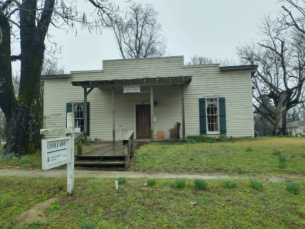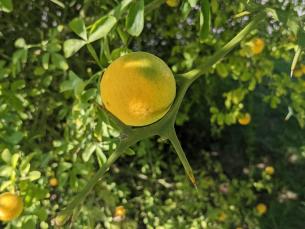
Three Sisters Garden
By: Chris AdamsAfter a wet spring, the sun finally shines in the sky for most of the day, allowing our park gardener to tend more to the Sanders House and Royston Log Home gardens than has been the case for the last few weeks. Our gardener chose an interesting historical planting technique to display and interpret for visitors to the park this year. This year, the gardener chose the Royston Log Home Garden to feature the Three Sisters planting method used by native Americans and later borrowed by American pioneers. The Three Sisters’ type of planting format is believed to originate in North America with the Iroquois and Cherokee around 1070 AD. This intercropping technique has been extensively studied and proven beneficial to everyone who has adopted this type of planting. It is a remarkable example of sustainable agriculture.
The legend of the Three Sisters varies across Native American tribes, but the essence is universal: corn, pole beans, and squash grow together as a harmonious family. If you read the legends, the plants were to be grown together, eaten together, and celebrated together. So what is this method, and how does it work? The sister corn stands to a great height, which provides support, as the older sister would do, for the beans to climb. The sister beans, in turn, enrich the soil with nitrogen, nurturing the other plants. Meanwhile, the sister squash sprawls across the ground, its leaves shading the earth to retain moisture and fend off weeds. This method, with its natural symbiosis, is a shining example of sustainable agriculture, inspiring us to adopt similar practices in our own gardens.
The Three Sisters are planted in a specific sequence to prevent competition. First, planting the corn allows it to grow until it reaches a few inches in height. Two to three weeks later, the bean seeds are planted. By the time the beans began to send out tendrils, the corn was tall enough to support them. Finally, squash is planted one week after the beans have sprouted. This staggered planting ensures that the large squash leaves do not overshadow the young corn and bean seedlings, giving them time to establish.
As visitors explore the Royston Log Home Garden, they witness firsthand how each plant supports and nourishes the others, reflecting the spirit of cooperation and community inherent in Native American culture. This method is about more than sustainable agriculture. It is about fostering a sense of community and shared responsibility. Through thoughtful interpretation, visitors can glean the wisdom of these ancient practices, inspiring them to adopt sustainable farming techniques in their own lives and contribute to a more sustainable and connected world.



